Chasing Pike on the Ice

Chasing Pike on the Ice
When Chad Loreth moved to the Iowa Great Lakes area in 2005, he knew he was coming to a great year-round fishery. Loreth has enjoyed helping anglers, both veteran and novice, young and old, enjoy the fishery through his guide service, Iowa Great Lakes Outdoors, Inc. As much as he likes open water fishing, it’s chasing fish on the ice that he relishes the most.
What Loreth has found is that the Iowa Great Lakes fishery has a truly untapped resource when it comes to fishing northern pike through the ice. Mike Hawkins, fisheries biologist at the Spirit Lake Hatchery says the data supports this, noting that there is a strong northern pike population and that it is greatly overlooked. Loreth finds the quality of northern pike to be good and will often take 30”+ fish.
Loreth says, “Early ice and late ice are the perfect times to target northern pike on East Okoboji, West Okoboji and Big Spirit Lake. Each of these lakes has excellent habitat and food for pike.” The formula is pretty simple. Locate the weeds, locate the panfish and you will find the pike close by. Let’s take a look at how this will play out.
Locations
Loreth notes weed growth is extremely important. “First, I will punch holes and use my underwater camera to find weeds that are holding small bluegills, potato chips, I call them. During early ice, I will be looking for remnants of weeds that are still up or green from the fall. If I find the small bluegills and the right weeds, I know that the pike will be somewhere nearby. Early in the season, I might set up as shallow as 3-4’ or up to 10-12’ of water.”
On East Okoboji, the curly leaf pondweed has totally changed how Loreth fishes the lake. “Curly leaf has really been a game changer as far as I am concerned. It dies off by July, but by the end of January in most years, new growth is already coming. As it grows, it provides protection for the small bluegills, and the pike are right behind. Once, I find the weeds, I might fish the same general areas all winter.” Loreth always checks out the west side of the lake out across from the Kum & Go and all the way to Jingles Point to the south.
On West Okoboji Emerson Bay, Millers Bay and North Bay (Triboji) are the three main areas that Loreth targets. “I target both Emerson Bay and Millers Bay at early ice and then find the North Bay to be good mid to late winter.” Emerson Bay’s west side in front of the boat ramp and the bar between Pocahontas and Eagle Points are key areas. Meanwhile, on Millers Bay try out in front of the Lakeside Lab and on the south side of the bay out in front of the canal opening.
When it comes to the North Bay, try the east side along the Methodist Camp and along the west side in front of the Triboji boat ramp.
In addition to looking for the weeds, Loreth will also look for what he calls “small basins” on a bar or adjacent to a shallow shoreline. “For instance, on the bar between the points on Emerson Bay, there are all kinds of weeds in 8-10’ of water. There are two basins out there. A basin is a depression or bowl that is a few feet different than the surrounding lake bottom and might be up to an acre in size or more. This is a good place to set up right on the edge of the basin. Plus, when a cold front comes through, the panfish will move down into the basin, especially when we get our first continuous layer of snow that covers up the ice for the winter.”
Pike on Big Spirit are most often found in Anglers Bay and out in front of the boat ramp in Hales Slough. “From the bar out in front of Trickles Slough all the way to Anglers Bay resort to the east are great places to set up for pike. Plus, Anglers Bay can be a great panfish hotspot. Hales Slough is more of a late ice bite because the pike are beginning to stage to go to the tramp of the slough to spawn.”
Presentations
No matter where he fishes, Loreth will fish both pike and panfish at the same time. Since Iowa will allow an angler to purchase a “third line” option, he will use two lines for pike and one for panfish. “This helps me spread out my footprint, so to speak. My go-to bait for pike is using a blue chub. On some days, a live blue chub works best and sometimes a dead blue chub will work better. The equipment he uses includes Clam Trophy Thermal Tip Up or a 36” JT Walleye Snare rod/reel combo with rod holder. For the panfish, my favorite is JT Panhandler with or without spring and a 1/64-ounce gold Clam Drop Jig tipped with a plastic.”
For the pike presentation, Loreth will use a #4 treble hook attached to a 2’ fluorocarbon leader with a swivel tied to braided line for the tip up reel and Berkley FireLine Micro Ice on the reel for the Walleye Snare. “I always set the chub, so it is up 2-3’ off the bottom. In some instances, this might only be 1-2’ beneath the ice. I don’t use a weight because I want the chub to be able to free swim. It will swim pretty crazy when it’s first put in the water, but then it will settle down. When a pike comes near, the chub will become more frantic and with no weight will swim more naturally as it tries to escape.”
If a pike takes the bait, Loreth says there is no need to hurry. “When the tip up goes off, the fish goes on a run and will then stop to turn the chub in its mouth. Then it will take off again. At this point, I will tighten the line to feel the pike and once I feel the pressure, I will set the hook.” At this point, Loreth says to not horse the pike. “Take your time and play them. I like to err on the side of caution!”
The same holds true with the Walleye Snare. “The combo is set in the rod holder and I have the drag adjusted light enough so that when the pike takes the bait, the rod will load up and apply tension to the line, but the fish can still take line. When the pike stops, the rod still holds the tension, and then when it makes its next run, I’ll pick up the rod and begin to reel. With the Walleye Snare, there is really no reason to set the hook. The rod has done the work for you.” Again, Loreth suggests not horsing the pike. Let the rod and reel do the work for you.
Not all weeds will hold fish, but the right weeds plus the right panfish equal excellent pike fishing. As Loreth notes, “There are good numbers of pike that will provide ice anglers an opportunity to get out and target these fish, and fishing tip ups can be a fun family and friends outing! Racing for a flag with the Walleye Snare is always fun for kids, especially if they have never caught a pike using these presentations.”
by Steve Weisman
January 2021

